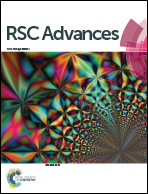Synthesis and characterization of poly(γ-glutamic acid)-based alumina nanoparticles with their protein adsorption efficiency and cytotoxicity towards human prostate cancer cells
Abstract
Metal oxide nanoparticles, especially alumina nanoparticles (AN) have drawn considerable attention in biotechnological and biomedical applications. Interaction of nanoparticles with protein plays a crucial role in several medical applications. Also, nanoparticles may exert toxic effects on cancer cells that can be beneficial for application in cancer therapy. The objectives of this study were to synthesize and characterize poly(γ-glutamic acid) (γ-PGA)-functionalized alumina nanoparticles (γ-PAN) for evaluation of protein adsorption ability using bovine serum albumin (BSA) and lysozyme (LSZ) as well as cytotoxicity towards human prostate cancer cell PC-3. Characterization of both AN and γ-PAN revealed a spinel lattice structure belonging to γ-Al2O3 with the mean particle size as determined by TEM being 5.4 nm for AN and 6.7 nm for γ-PAN. The zeta potential at different pH changed from positive to negative upon coating γ-PGA onto AN with a shift in point-of-zero-charge from 9.1 to 3.2 mV. Positively-charged AN at pH 7 could preferentially adsorb BSA compared to LSZ, while an opposite trend was observed for negatively-charged γ-PAN. The Langmuir adsorption capacity for AN and γ-PAN was 224.5 and 36.1 mg g−1 for BSA, respectively, and 16.2 and 110.1 mg g−1 for LSZ. Both AN and γ-PAN could lower cell viability of PC-3 cells in a dose-dependent manner with the latter more efficient than the former. The ROS production also increased with dose, which may lead to cytotoxicity towards PC-3 cells through oxidative stress and mitochondrial dysfunction. Thus, the γ-PGA functionalized alumina nanoparticles may be used as a promising material for future biomedical applications.


 Please wait while we load your content...
Please wait while we load your content...